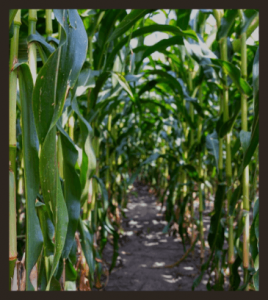Objectives

Only a low fraction of the available maize diversity is currently being used in breeding programs. DROMAMED plans to rescue that unused germplasm, using resilient maize varieties in the implementation of biodiversity-based Innovative Farming Systems (IFS) that will achieve sustainability through agronomic practices that optimize inputs. These IFS will be climate resilient and efficient, cost-effective and environmentally and socially responsible.
Thus, the main purposes of DROMAMED are to:
1
Develop Innovative Farming Systems (IFS) by using maize germplasm collections maintained in Mediterranean countries, which hold large variability and have been selected for adaptation to a diversity of stressful environments.
2
Capitalize current and new knowledge about mechanisms of adaptation to specific environments and tolerance to stresses to define novel selection indexes.
3
Develop and/or improve IFS that will increase our ability to optimize breeding approaches and crop management practices enhancing maize adaptation and tolerance to abiotic stresses.
From a scientific research perspective, DROMAMED aims to advance the knowledge on the genetic, biochemical and physiological mechanisms underlying stress tolerance helping to provide useful tools and materials to capitalize the diversity of maize around the Mediterranean Area.
Specific objectives & work packages
Work Packages (WP) are the main divisions of DROMAMED’s Work Plan. They are built over six specific objectives and they comprise a series of work to do, clear results to achieve and defined deliverables to provide. The Work Packages / Specific Objectives (SO) of DROMAMED are the following:

SO1/WP1: Assemble three types of germplasm collections (landraces, inbred lines and improved varieties) of maize adapted to Mediterranean dry areas, by pooling, evaluating, and screening for stress-tolerance national germplasm collections.
SO2/WP2: Support Innovative Farming Systems (IFS) by promoting soil fertility, quality, and sustainability of agricultural models.
SO3/WP3: Identify and characterize Quantitative Trait Loci (QTL), involved in maize adaptation to drought and heat stress.
SO4/WP4: Investigate the physiological and morphological mechanisms involved in maize resilience to drought and temperature stress.
SO5/WP5: Establish predictive models and selection criteria for breeding programs focusing on tolerance to drought and high temperature. Phenotypic, marker assisted, and genomic selection models will be designed to improve tolerance to combined stresses.
SO6/WP6: Complete breeding programs initiated in previous projects and release new stress tolerant populations, inbred lines, and hybrids, to be evaluated by stakeholders. Improved varieties will mitigate the effects of drought and heat stresses of climate change scenarios and allow to achieve sustainable production.


